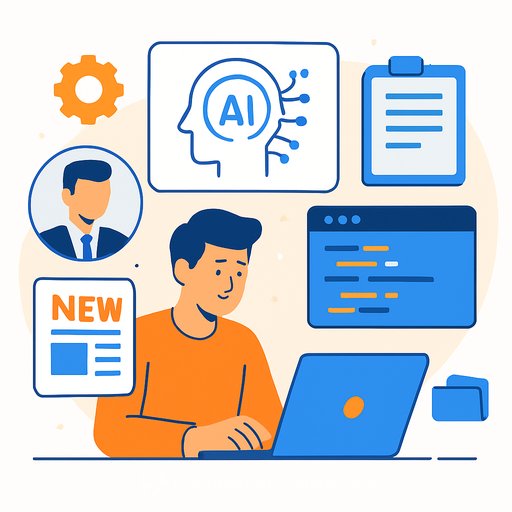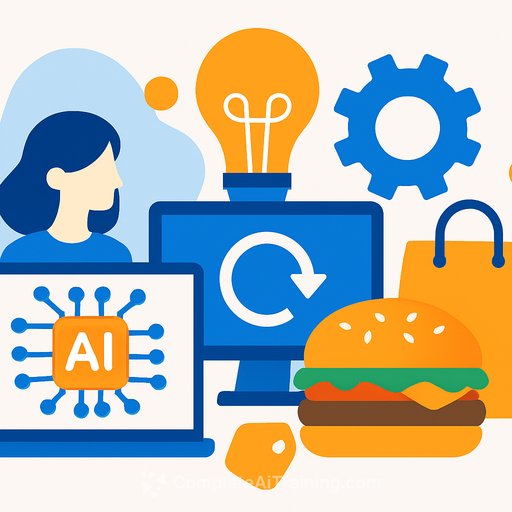Trintech Appoints David Taylor as Chief Product Officer to Advance AI-First Financial Close
Trintech has named David Taylor as Chief Product Officer to lead its AI-first product strategy for the financial close. The move signals a focused push to scale intelligent automation, predictive insights, and smoother user experiences across Trintech's portfolio.
Based in Dallas, the company states Taylor will partner with customers, partners, product management, and engineering to speed delivery of AI capabilities that help finance teams work faster with higher confidence and control.
Why this matters for Finance and Product Leaders
- Shorter close cycles: Automate high-volume reconciliations, exception handling, and approvals to reduce manual effort and cycle time.
- Predictive visibility: Use anomaly detection and trend predictions to surface risks, late tasks, and material variances before they hit the finish line.
- Better control and audit readiness: Strengthen consistency, evidence, and policy adherence across entities, periods, and teams.
- Cleaner user experience: Streamlined workflows and guidance that reduce clicks, context-switching, and training time.
What to expect from Trintech's product direction
- AI-first roadmap: Every workflow-from reconciliations to certifications-prioritizes automation, recommendations, and proactive alerts.
- Insight over activity: Dashboards that track outcomes (e.g., days to close, auto-match rates, exception aging, audit findings) rather than task volume.
- Open collaboration: Tighter integration with ERP, FP&A, audit, and data platforms to keep data, controls, and workflows aligned.
- Human-in-the-loop by default: Clear review, approval, and traceability for AI-assisted steps to maintain trust and compliance.
Signals for your 2026 planning
- Pilot AI use cases with measurable targets: auto-match rates, exception reduction, and cycle-time improvements by period and entity.
- Shift from templates to playbooks: Standardize close tasks by risk tier and materiality, then apply AI to prioritize work.
- Elevate UX as a control: Fewer touchpoints and clearer guidance reduce errors and rework as much as policy changes do.
- KPIs that stick: Monitor days to close, re-open rates, late-task percentages, and audit adjustments as your core scorecard.
Leadership perspective
"This is the moment to double down on AI-first," said Darren Heffernan, CEO of Trintech, noting Taylor's blend of product leadership and finance expertise. He emphasized the goal: help finance teams move faster with more certainty while addressing complex business problems with AI at the center.
"The future of finance is intelligence-driven automation and predictive analytics," said David Taylor. "Our focus is to streamline the close and give teams time back to work on the initiatives that matter to their organizations."
About David Taylor
Taylor brings more than 25 years of experience in product innovation and organizational change across public, private equity, and venture-backed technology companies. He has held roles including Chief Innovation Officer, Chief Operating Officer, Executive Vice President, and Chief Product Officer, with a track record of applying AI to scale enterprise SaaS and create business impact.
About Trintech
Trintech provides AI Financial Close solutions that help finance and accounting teams increase productivity, reduce risk, and make better decisions. Headquartered in Plano, Texas, Trintech operates across the United States, Europe, Australia, South America, Africa, and Asia Pacific with a strong partner ecosystem.
Learn more at trintech.com.
Next steps for teams
- Assess where AI can remove the most friction: reconciliations, intercompany, period-end certifications, or audit support.
- Define guardrails: validation rules, review steps, and evidence standards for AI-assisted tasks.
- Upskill your team to work with AI-driven workflows and metrics.
Further learning
Media Contact
Ned Tadic
Corporate Communications Manager
ned.tadic@trintech.com
Your membership also unlocks:










